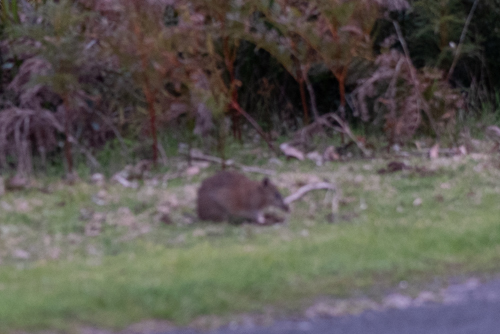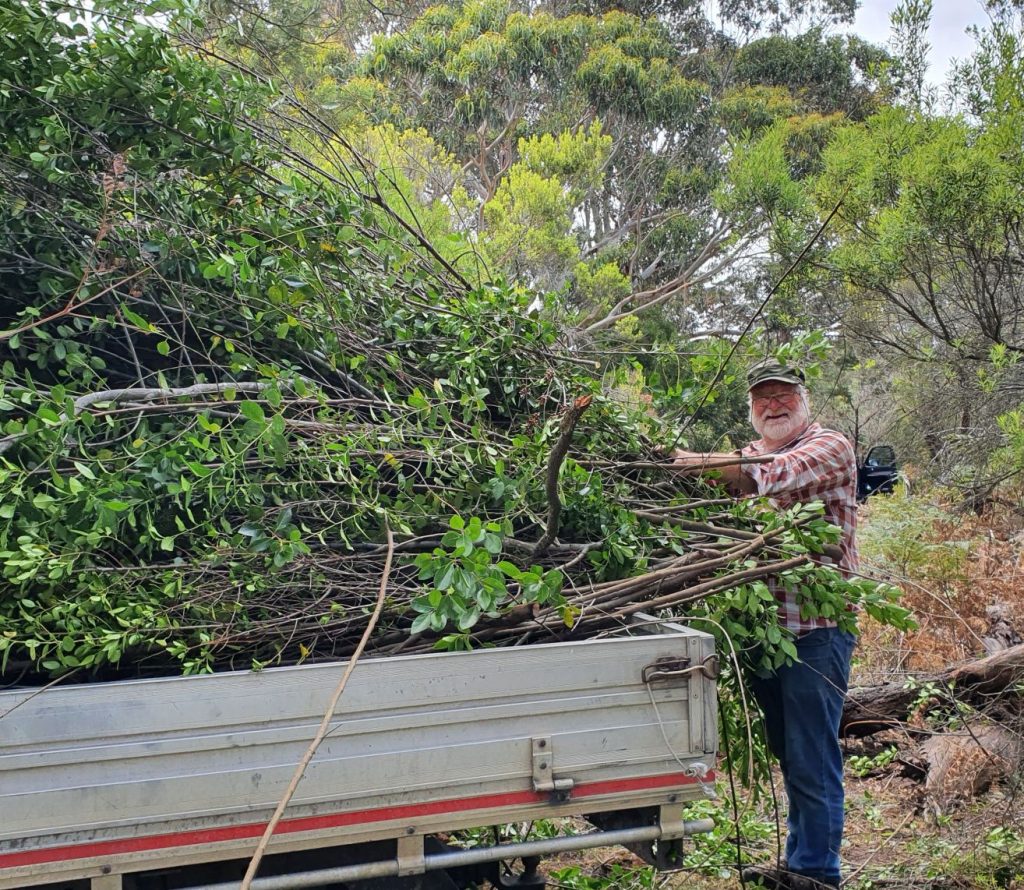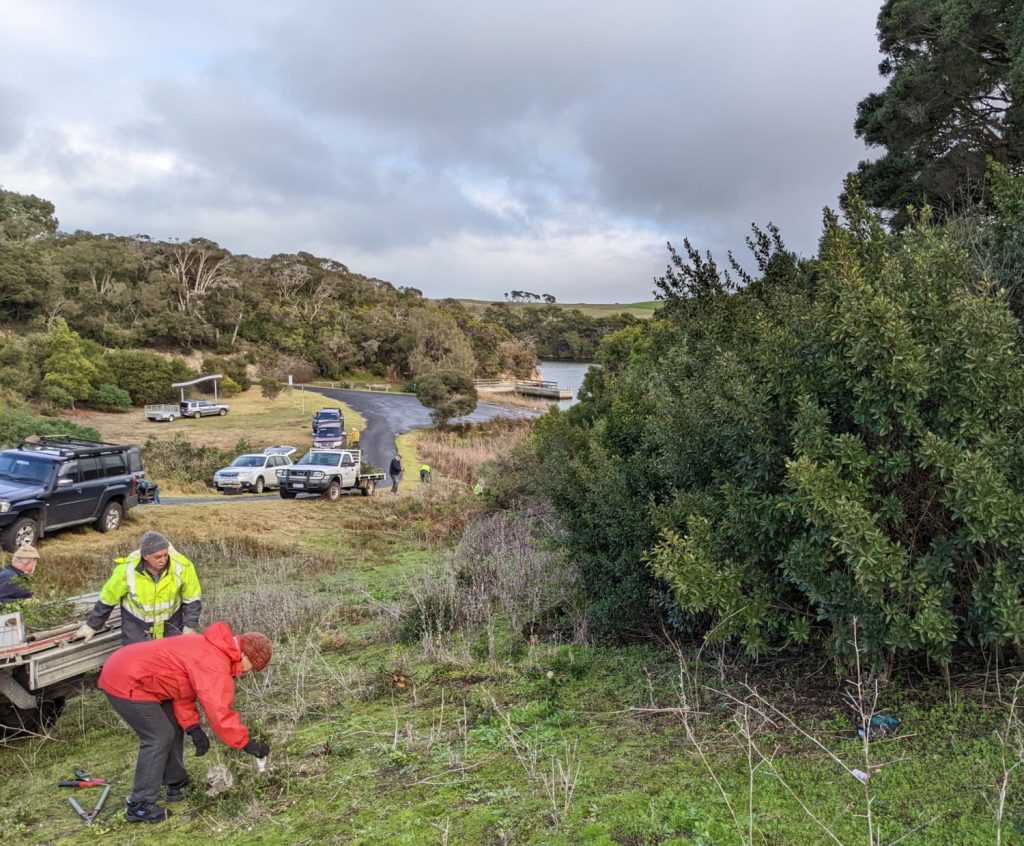Nelson sees community-led action for the Southern Brown Bandicoot and other small native mammals
For the last 12 months, NGT’s bushcare crew has been working steadily away near the end of the Glenelg River at Nelson, on a DELWP-funded project tasked with battling invasive woody weeds.
The key objective of the project is to help protect and improve key native habitat for small native mammals. The Nelson area is fortunate to have some of the most diverse small mammal fauna in Victoria, with records nearby including Southern Brown Bandicoot, Long-nosed Potoroo, four species of Antechinus (Dusky, Yellow-footed, Swamp and Agile), Dunnart (Common and White-footed), Heath Mouse, Eastern Pygmy-possum, Sugar Glider, and don’t forget the native rats (Swamp Rat, Bush Rat and Rakali)!
However, some of the most productive near-coastal habitat abuts the Nelson township. Being near a residential settlement brings issues including the spread of invasive woody weeds escaped from gardens and dumped at the transfer station. Out of a seedy lineup, the worst offenders are Italian Buckthorn, Polygala, Sweet Pittosporum, Boneseed, and the ever-present Sallow Wattle. All of these are increasing in density and moving into the national park and up the riparian frontage.

Most of our small native mammals are under intense pressure from feral cats and foxes and appreciate dense vegetation cover, but over time these particular weeds can form dense monocultures of mid-sized shrubs. This reduces diversity of habitat (e.g. less open grassy/sedgy areas, less grass-trees, less recruitment of large stringybarks and she-oaks) and this flows on to reduce the diversity and availability of food sources such as invertebrates and fungi.
This ongoing decline has been a motivating factor for the bushcare crew who have been on the tools regularly – mapping, chopping, cutting, swabbing, spraying, and dragging and piling weeds, planting seedlings and advocating for action around the fringes of the Nelson township. The local Nelson Coastcare (NCC) group has been a great project partner, helping to organise working bees alongside our crew and pushing for a strategic plan to combat weeds in the town.
One of the big wins was a coordinated assault on an infestation of Italian Buckthorn which threatens to take over a big, beautiful stand of Moonahs (Melaleuca lanceolata) by the Isle of Bags. This is the westernmost area of dense Buckthorn along the river and is therefore a priority for ongoing treatment. What seemed impossible at first is now completely cleared of weeds. Thanks to NCC’s Trevor and helpers for the huge task of piling all of our cut shrubs for burning by the local CFA.
Special thanks go to Mary, Trevor and the rest of the crew from Nelson Coastcare, the Nelson Committee of Management, Glenelg Shire Council, the Department of Environment, Land, Water and Planning (DELWP), and of course our dedicated bushcare crew – Sheryl, Angus, Dale and Rosemary.
As a final aside, below is a short video from a few weeks ago of a Yellow-footed Antechinus scurrying around the wall of our house in Nelson (at 2am) after some electrical work left a wall cavity open. Lesson learned – and once the Antechinus continued on its nocturnal journey, the hole was blocked off pronto! Yellow-footed Antechinus are incredibly surefooted climbers and thrive in woodland (and wooden beam) habitats with fallen timber where they access a range of food resources such as invertebrates, eggs, nectar and small vertebrates.
This project is funded by a Community Volunteer Action grant from the Department of Environment, Land, Water and Planning (DELWP).


